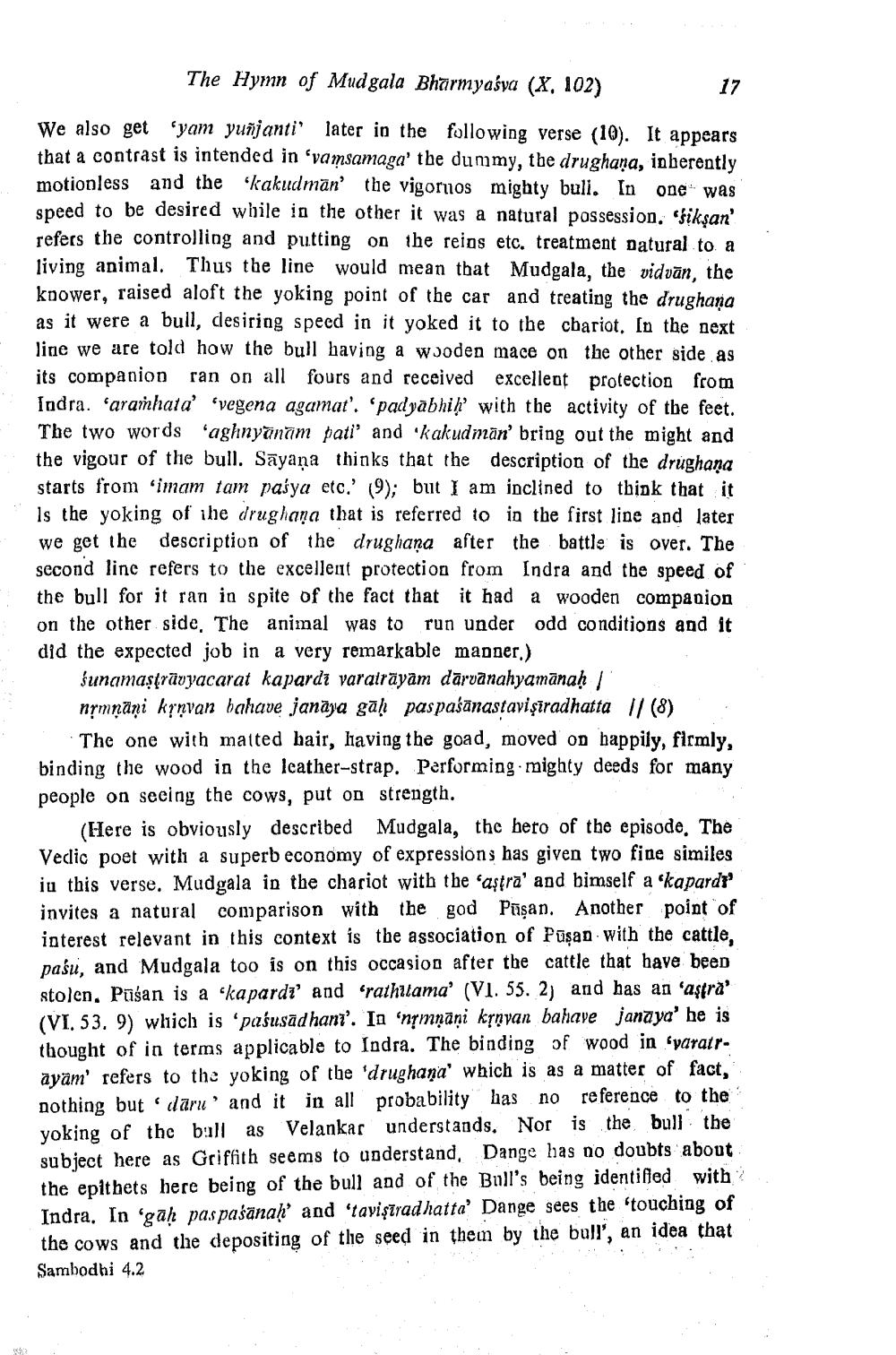________________
The Hymn of Mudgala Bharmyaśya (X, 102)
17 We also get ‘yam yuñjanti' later in the following verse (10). It appears that a contrast is intended in 'vamsamaga' the dummy, the drughana, inherently motiopless and the "kakudman' the vigoruos mighty bull. In one was speed to be desired while in the other it was a natural possession, siksan' refers the controlling and putting on the reins etc. treatment Datural to a living animal. Thus the line would mean that Mudgala, the vidvān, the kpower, raised aloft the yoking point of the car and treating the drughana as it were a bull, desiring speed in it yoked it to the chariot. In the next Jine we are told how the bull having a wooden mace on the other side as its companion ran on all fours and received excellent protection from Indra. 'aramhata' 'vegena agamat'. 'padyabhiḥ with the activity of the feet. The two words "aghnyānam pati' and 'kakudmān' bring out the might and the vigour of the bull. Sāyana thinks that the description of the drughana starts from imam tam paśya etc.' 9); but I am inclined to think that it Is the yoking of the drughana that is referred to in the first line and later we get the description of the drughana after the battle is over. The second linc refers to the excellent protection from Indra and the speed of the bull for it ran in spite of the fact that it had a wooden companion on the other side. The animal was to run under odd conditions and it did the expected job in a very remarkable manner.)
sunamastrāvyacarat kapardi varairāyām dārvanahyamānah / nymmäni krnvan bahave janäya gāh paspašānastavişīradhatta // (8)
· The one with matted hair, having the goad, moved on happily, firmly, binding the wood in the leather-strap. Performing mighty deeds for many people on seeing the cows, put on strength.
(Here is obviously described Mudgala, the hero of the episode. The Vedic poet with a superb economy of expressions has given two fine similes iu this verse. Mudgala in the chariot with the "aştra' and bimself a 'kapardi" invites a natural comparison with the god Paşan. Another point of interest relevant in this context is the association of Puşan with the cattle. pašu, and Mudgala too is on this occasion after the cattle that have been stolen, Pusan is a “kapardı' and 'rathilama' (VI. 55. 2) and has an 'astra' (VI. 53. 9) which is 'paśusādhani'. In 'nīmnāni kịnyan bahaye janaya' he is thought of in terms applicable to Indra. The binding of wood in "yaratrayam' refers to the yoking of the 'drughana' which is as a matter of fact, nothing but daru' and it in all probability has no reference to the yoking of the b:ll as Velankar understands. Nor is the bull the subject here as Griffith seems to understand, Dange has no doubts about
with the epithets here being of the bull and of the Bull's being identified Indra. In 'gah paspaśänah' and 'tavişīrad hatta' Dange sees the "touching of the cows and the depositing of the seed in them by the bull', an idea that Sambodhi 4.2




